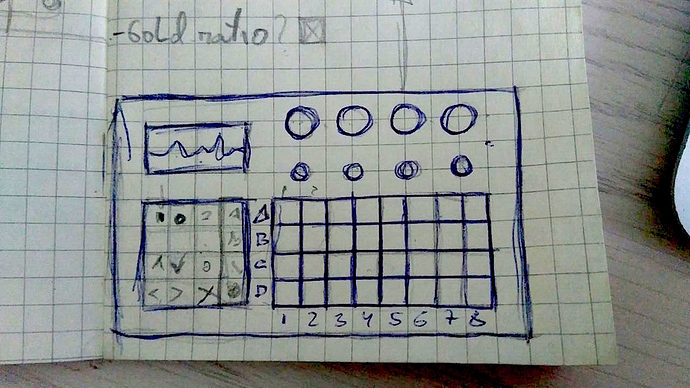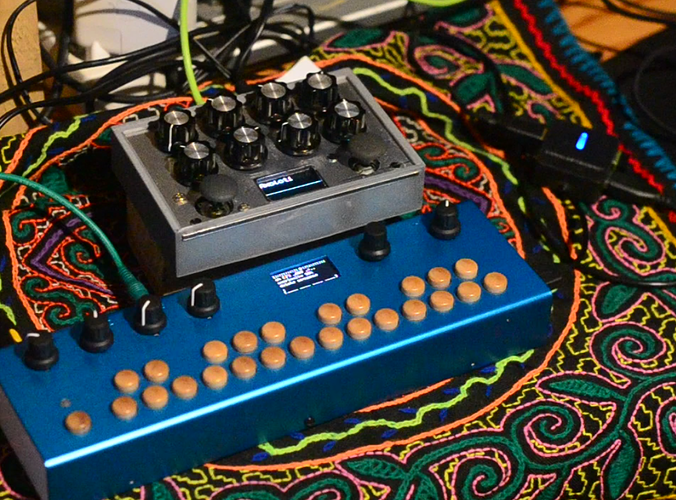Hi! As I struggle with making my own enclosures and imagine that a lot of people do, I'd like there to be something like a "standard enclosure" of good quality. I know of the ones hohum lab make and they look nice, but I'd prefer a metal case and more potentiometers.
I contacted Adrian Hallik, who makes really beautiful cases for well known DIY-projects like Mutable Instruments Shruthi (XT), Ambika & Anushri, the Sonic Potions LXR drum machine or the MIDIbox Seq V4+. He said that he would like to make a case and optionally an expansion board as well when he has time.
You can look at some of his cases here and here. What should a case in this style and most importantly its front panel ideally look like?
My first suggestion would be: use all the GPIO pins with the biggest OLED display possible, 15 Potentiometers and 3 push buttons on the remaining digital pins (did I count right? ).
).



 .
.
